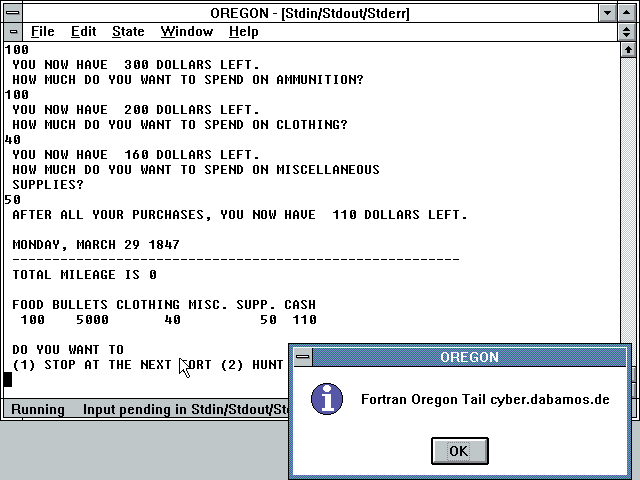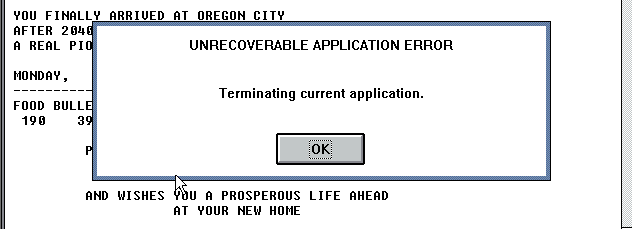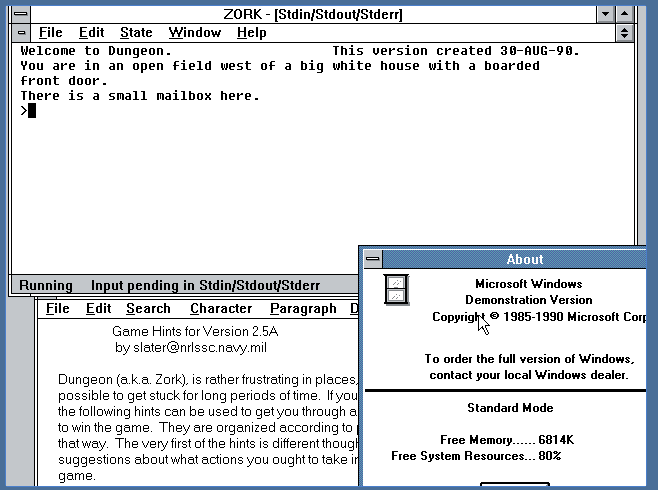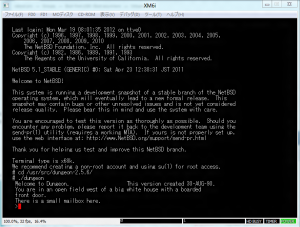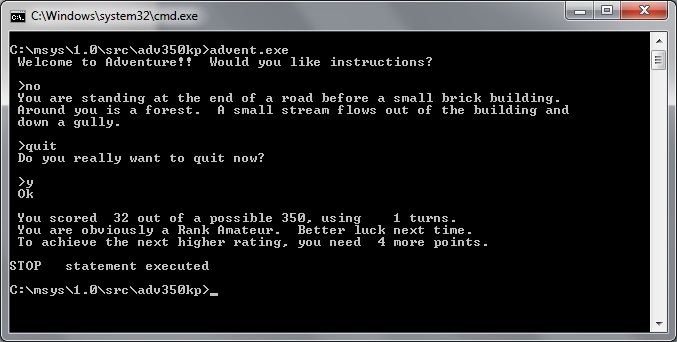Ok, so I was looking at this ancient machine the other day, and I was wondering if I could at least build the f2c to run on either Win16 or OS/2 1.x. There was mention of it running on MS-DOS ages ago but I thought it’d be more interesting to try something else…
Well one thing is for sure, QuickC for Windows, wins HANDS DOWN for a ‘nice’ environment for building stuff… Once it was all said & done, on Windows 2000, I had f2c running, and converted the dungeon source, and building dungeon along with the libf2c. I couldn’t find a ‘nice’ way to build libraries with QuickC, and building a windows dll for libf2c would mean re-writing the IO for Win16.. If it were 15 years ago I may have done so, but nobody will use it now, so I just took the short cut of compiling the dungeon program & the library together… Surprisingly on a ‘fast’ machine with Virtual PC, 100,000+ lines of code compiles in under 10 seconds!
So the first result I got for my effort was this:
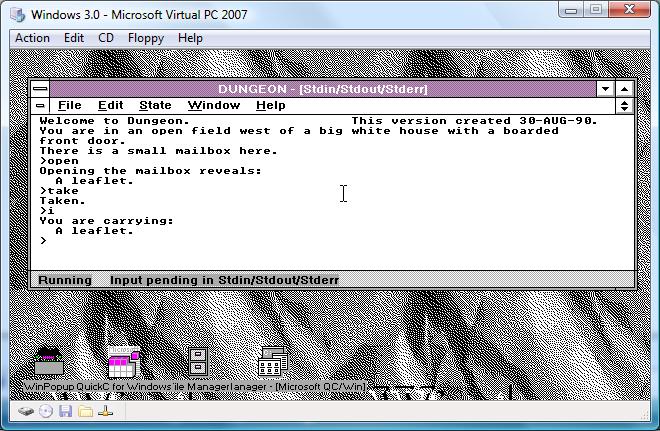
Dungeon in QuickWin on Windows 3.0 via F2C
Which wasn’t that bad, and I’m just amazed it works… You can download it from here. And thanks to the power of jDOSBox, you can run it live here.
The next thing I did was break out some ancient Microsoft C, and start to build f2c. That is when I found out that the resulting exe with C 5.1 doesn’t work, and 6.0a crashes when compiling part of the translator… However using 6.0a for *MOST* of f2c, and building the one faulting module with 5.1 results in a working f2c. The library built without issues, although I had a *HELL* of a time trying to remember how to build a static library for OS/2. I ended up just using lib & gluing it together one object file at a time… Not the ‘best’ but it works.
The next hardest thing was figuring out the linker definitions & response files to build a ‘windowed’ text client for OS/2. Luckily I was able to go through enough things to do it, and it was a LOT of work…. I almost wonder if it’s worth posting about it… But all my build steps are in the zip file located here.
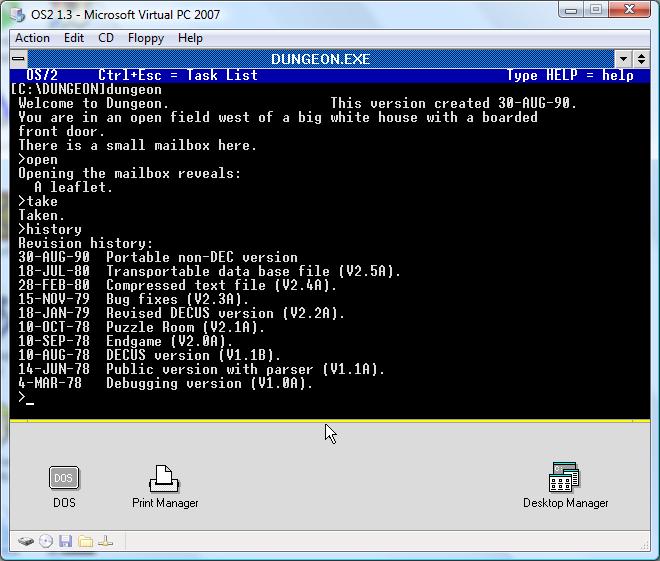
Dungeon on OS/2 in a window via special linking..
It was a *LOT* of nonsense work to get this thing in a window for a good screencap… lol but in the end I guess it was worth it. I suppose I could try building it for MS-DOS, but really, where is the fun in that?
One thing is for sure, having this back when I actually used OS/2 1.3 or Windows 3.0 (I had CGA!!!) would have been cool… But now I guess it’s totally pointless, but whatever.
